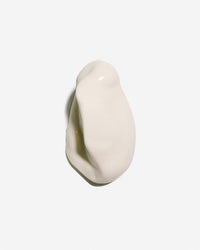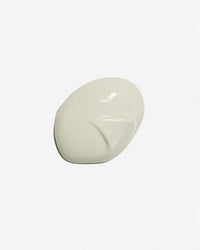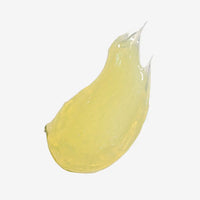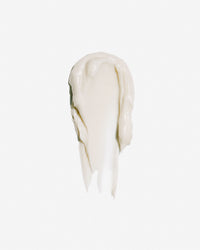What is the process of skin pigmentation?
Dr. Sylvie Peres : Melanocytes are cells involved in skin pigmentation located at the junction between the epidermis and the dermis. They are responsible for the production of melanins, which are among the main biological pigments responsible for the coloring of our skin, hair and hair. Tanning is, above all, a natural defense mechanism of the skin surface against UV aggression, because the more the epidermis is exposed to the sun, the more the production of melanin (brown-brown pigment) by melanocytes is stimulated and diffuses into the other cells of the epidermis, called keratinocytes.
The skin also activates a second defense, that of keratinocytes, which actively multiply to form a thick layer protecting the germ cells at the base of the epidermis. In summer, the entire skin is therefore in action, much more than usual, but UV rays generate free radicals. The skin produces enzymes to neutralize them, but it gradually loses its ability to create enough. In about twenty minutes in the sun, it has lost all the vitamin E it contains and cannot synthesize it itself.
1-Respect your skin
The softer the tan, the more even and long-lasting it will be. It is essential to avoid unpleasant, unsightly sunburn, which is a major cause of cancer, particularly melanoma.
| The ideal is to gently prepare the skin through gradual exposure. Prefer early morning or evening exposure, gradually lengthen the duration, then cover up, applying SPF 50+ sunscreen to exposed areas. |  |
2-Prepare your skin well for the sun
To "sunbathe" properly, you must start exposure with perfectly hydrated skin, maintained by regular peels and scrubs because a thick horny layer protects against UV rays.

On the face, apply the Fruit Acid Peel once or twice a week. It helps fight hyperkeratinization by removing the superficial layers of the skin. It can be applied twice a week, in the evening, even in summer. It also helps prevent acne from recurring at the start of the school year. Its formula contains all the alpha hydroxy acids extracted from fruits – lemon, orange, blueberry, sugar cane, maple.

On the body, apply the All Apricot Scrub to remove dead skin once or twice a week.
3-Have a well-hydrated skin
This is important for skin quality and a long-lasting tan. To achieve this, you need to choose formulas that contain humectant molecules like glycerin and water-retaining molecules like hyaluronic acid, as well as a combination of plant oils and waxes.
 |
When you return from the beach, depending on your mood, apply a scented oil that penetrates quickly, such as our Nourishing Rose Petal Oil . Multi-functional, it can be applied to the face, body and hair and, thanks to its richness in carotenoids, it stimulates tanning. |
| Alternate with the Summer Garden Radiance Balm , which you massage after showering to activate microcirculation and thus limit insensible water loss and restore the skin's functionality by building the hydrolipidic film. Its formula is rich in mimosa wax, coconut oil, and wheat germ oil. |  |
 |
On the face, apply morning and evening one of our moisturizers with G5 complex, rich in organic sprouted seed extract, camellia oil and beeswax. |
4-Consume foods rich in vitamin A
To get a slightly more tanned complexion: cod liver oil, micro-algae (spirulina and chlorella), colorful fruits and vegetables to eat raw (lettuce, spinach, kale, carrots, squash, tomatoes, eggplant, beetroot, blueberry, watermelon, papaya, guava and melon).
Tyosine, the amino acid precursor to melanin, is also of interest. It is found in the following foods: almonds, avocados, bananas, lima beans, pumpkin seeds, sesame seeds, and certain hard cheeses such as Parmesan and Comté. Cysteine is also involved in melanin synthesis: brewer's yeast, wheat germ, garlic, onions, Brussels sprouts, broccoli, nuts, seeds, seafood, fish, eggs, and meat.
Antioxidants effectively trap free radicals generated by ultraviolet rays. Sources of vitamin C and antioxidants are fresh, seasonal fruits and vegetables. It's important to look for short (direct from the producer) and organic sources, which guarantee good value for money, are pesticide-free, and richer in antioxidants.
It is also important to follow the seasons, this allows you to change your diet and detoxify the liver for spring cooking, we think of herbs thyme basil, parsley, coriander wild garlic...ginger and turmeric but also delicious seaweed in salads!
Vitamin E is a fat-soluble vitamin, so it's found in fat-rich foods like wheat germ oil, sunflower oil, grape seed oil, walnuts, almonds, avocado, and oily fish. Eat 5 servings of fruits and vegetables (tomatoes, melons, strawberries, carrots, etc.) every day. For snacks, consider fresh tomato or carrot juice, for example.
Omegas : Those that boost hydration, the right cocktail of omega 3, 6, and 9. Each vegetable oil has a unique composition that combines varying levels of fatty acids with other so-called minor components, but whose role is not negligible! Choose organic and cold-pressed oils to preserve their benefits. Combine them according to the desired goals (anti-inflammatory, hydration, etc.).
5-Boost antioxidants
| Sources of vitamin C and antioxidants are fresh seasonal fruits and vegetables (peaches, nectarines, grapes, peppers, raspberries, strawberries, blackcurrants, pomegranates, etc.). It is important to follow the seasons; this allows you to change your diet and detoxify the liver. For a sunny kitchen, consider herbs (thyme, basil, parsley, ginger, and turmeric), but also seaweed, which is delicious in salads. Vitamin E is a fat-soluble vitamin, so it's found in fat-rich foods such as wheat germ oil, sunflower oil, grapeseed oil, walnuts, almonds, avocado, and oily fish (sardines, cod liver). |  |




